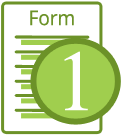September 26, 2011 (Chris Moore)
Consumer spending accounts for about 70 percent of all economic activity in the United States and although much of the media plays up the importance of housing in an economic recovery, the fact remains many Americans suffer from the same affliction our government does…too much spending and not enough income.
Americans went on a spending spree in the first decade of the millennium and didn’t stop until it all came crashing down on them 7 years later. The problem was we bought too much on credit and not enough for cash while household incomes were in decline.
And it was all too easy.
The credit was easy and the interest rates were cheap. The value of our homes rose so fast we couldn’t wait to take a second or refinance our home to pull cash out and buy those toys that under normal circumstances we would never have considered purchasing. Too expensive to pay off in five years? Stretch it out over 15 or 30 years and what was once unobtainable suddenly became affordable.
Credit card offers arrived in the mail daily. Heck, they’d even transfer the balance from one credit card to another for free, with no interest for six months, and when they started charging for interest…just get another one!
First year mortgage rates under one percent? What a deal! A person or family making $60,000 a year could qualify for a half million dollar home and “IF” the payments got too high, you could sell it, take the equity and buy another home. Prices were going to go up forever, remember?
But as we all know, what goes up, must come down. And it did…hard.
Here’s what we’ve been left with:
Total US Mortgage Debt:
2000: $6.75 trillion
2011: $13.72 trillion
Total US Consumer Debt:
2000: $1.53 trillion
2011: $2.45 trillion
Real median household income (adjusted for inflation):
2000: $53,164
2010: $49,445
Personal debt per US citizen:
2000: $29,200
2011: $51,289
We spent and we spent and we spent and we spent, not because we became wealthier, but because our ability to spend became easier and cheaper.
Correct me if I’m wrong, but I do believe it was ex-Federal Reserve Chairman Alan Greenspan who believed in the concept of obtaining wealth through debt. I would have to say that there are millions of Americans who would dispute that theory.
There’s plenty of blame to spread around as to how we got where we are at today. A lax monetary policy by the Fed, social engineering by our government, a lack of oversight by Congress, greedy banks and mortgage companies (taking advantage of a lax monetary policy), an over-zealous housing and real estate industry, and consumers who wanted to believe that this would last forever by buying homes that they should have never been able to buy.
So what happens when you get to the point where you can’t spend anymore? You get 2011.
Our economic problems go far beyond just fixing the housing industry. Just like our government, a little financial discipline on our part may be in order.
Tags: consumer debt, mortgage debt, personal debt, consumer spending, easy credit, cheap mortgage rates, economic activity




